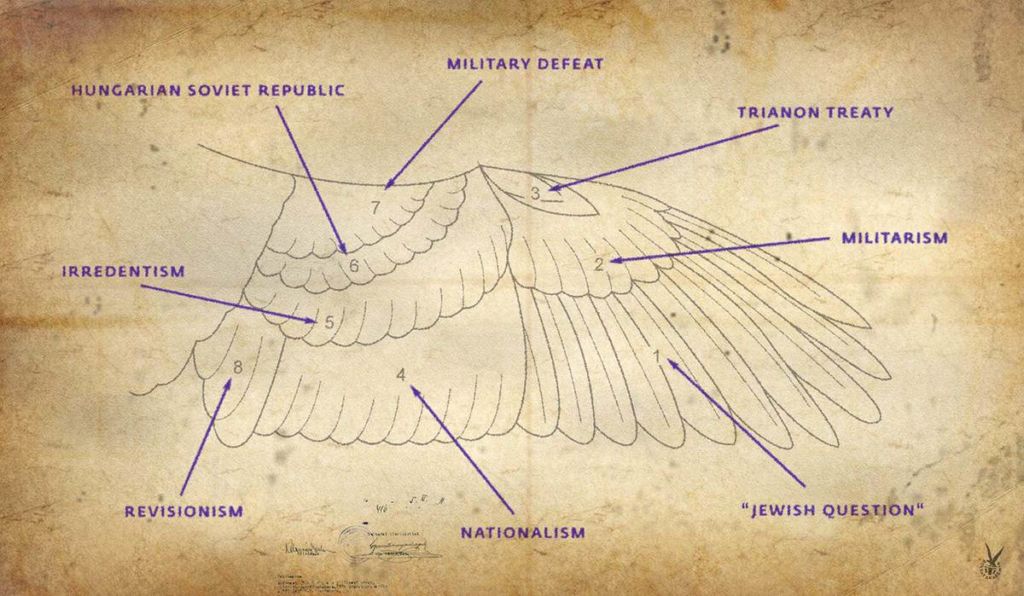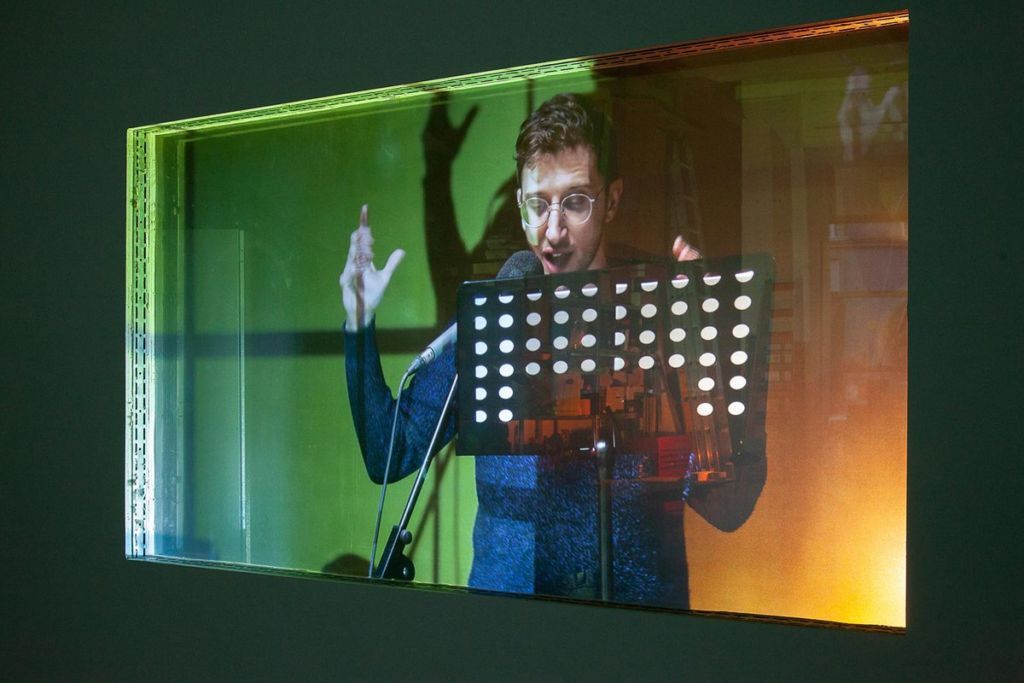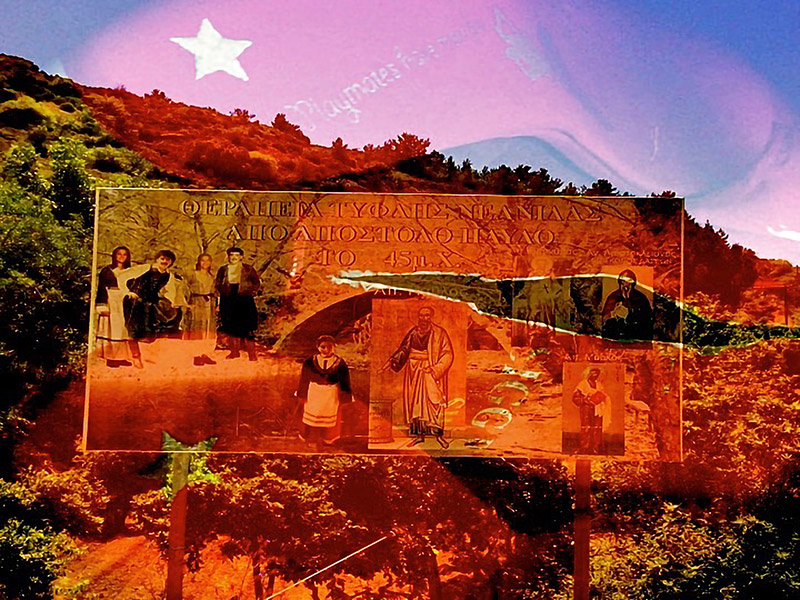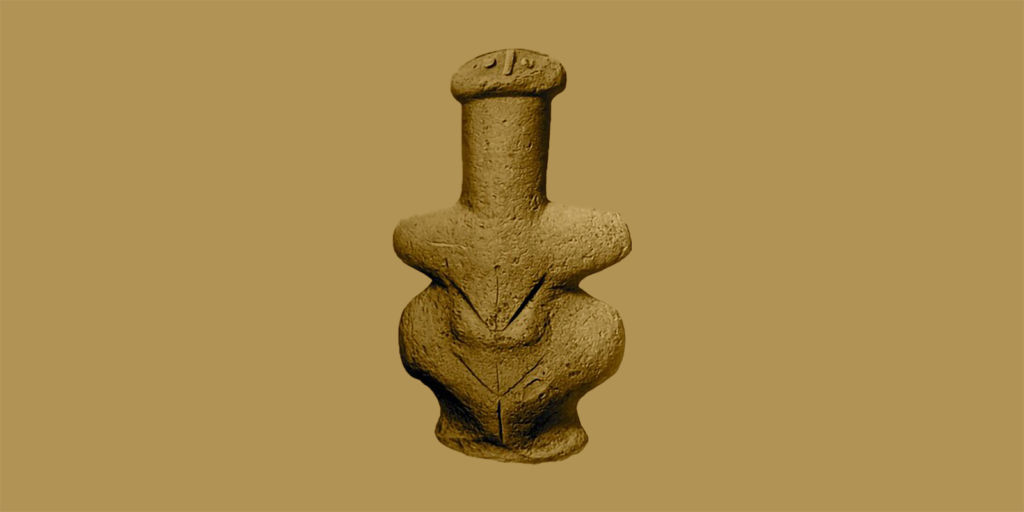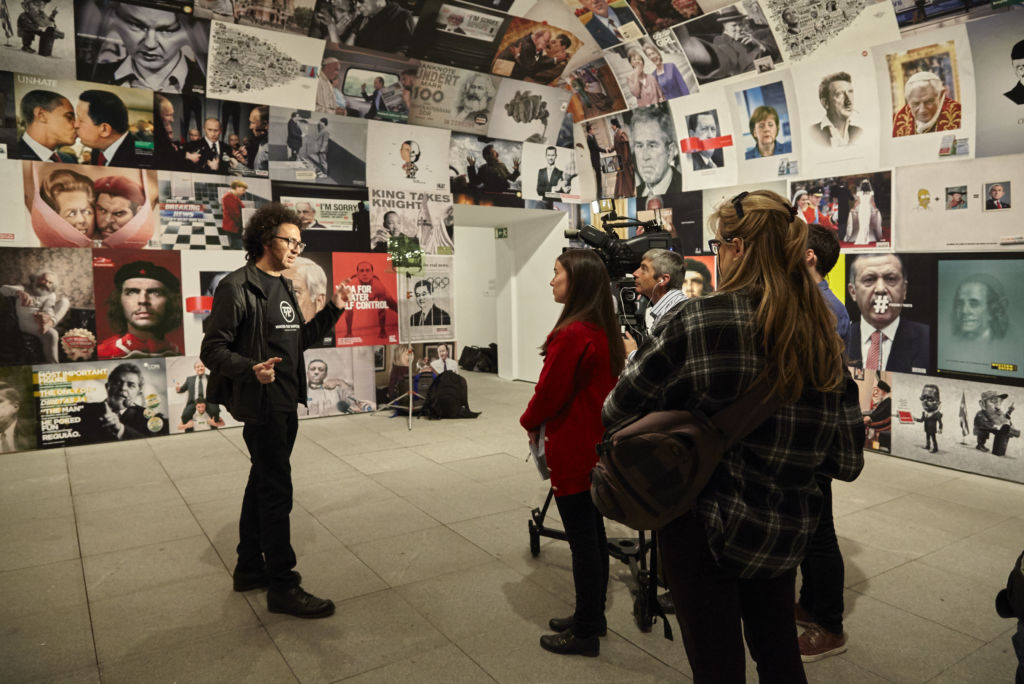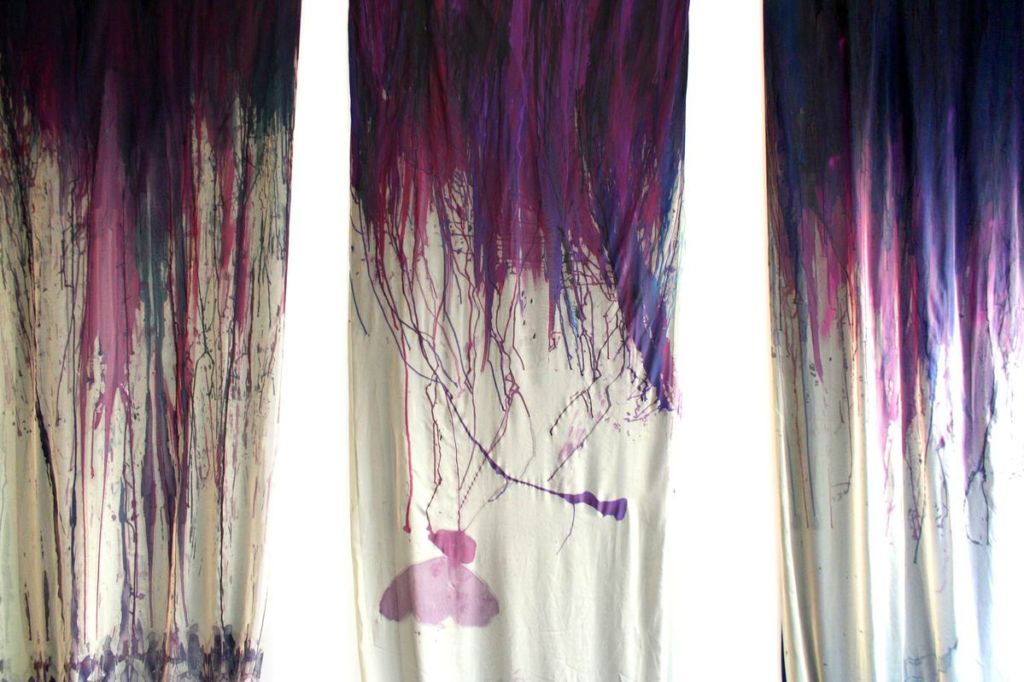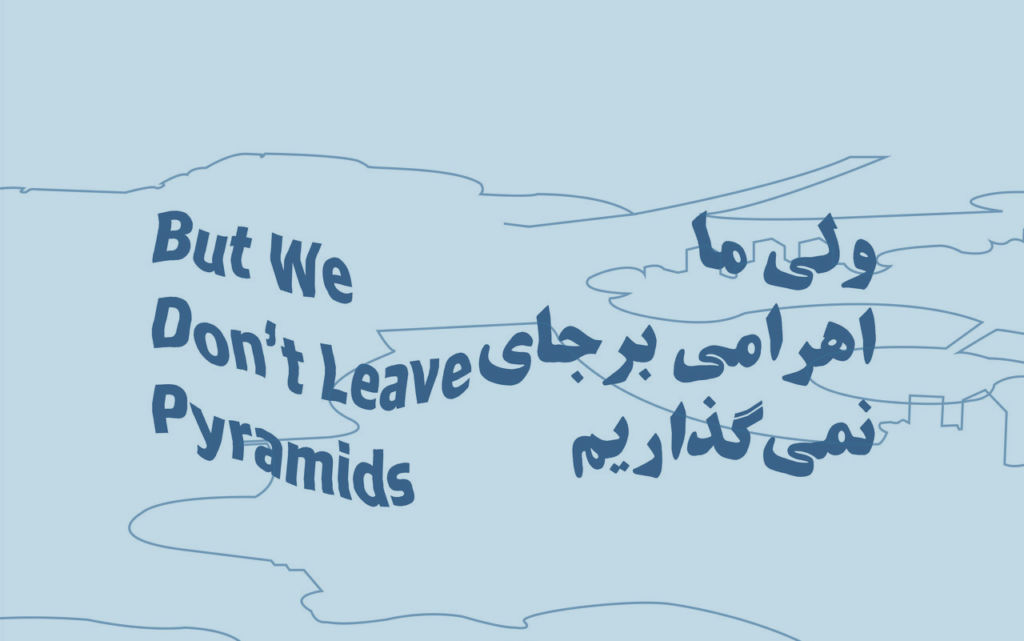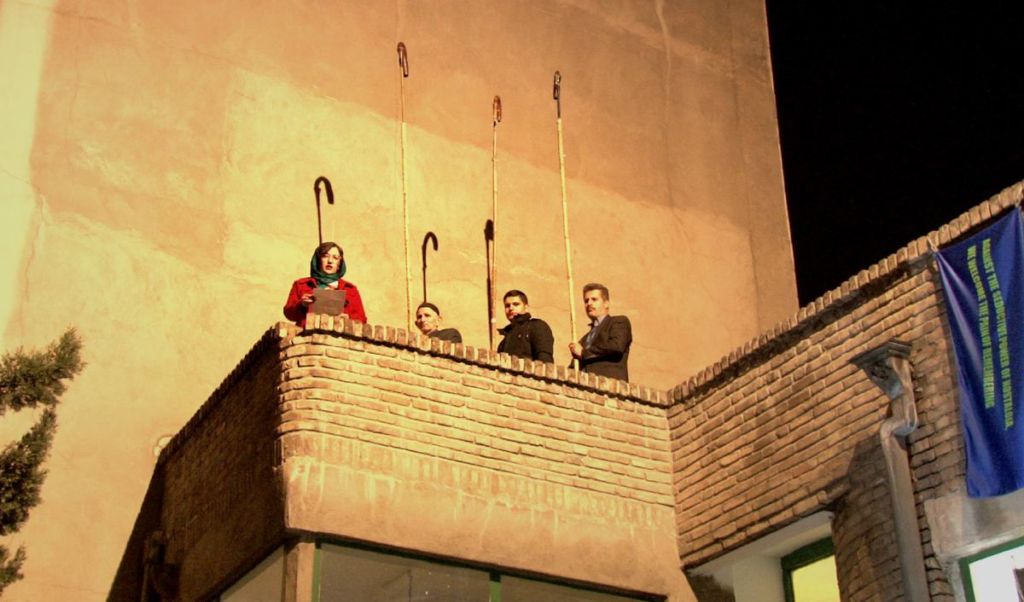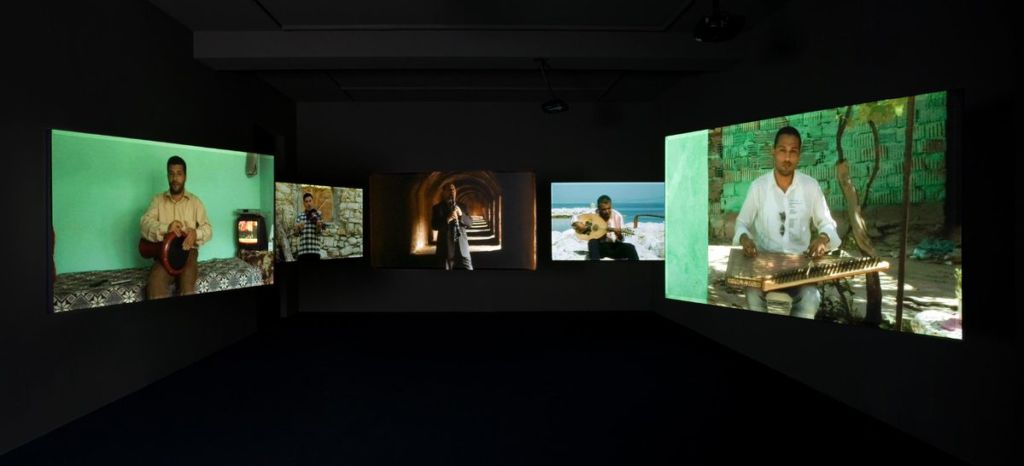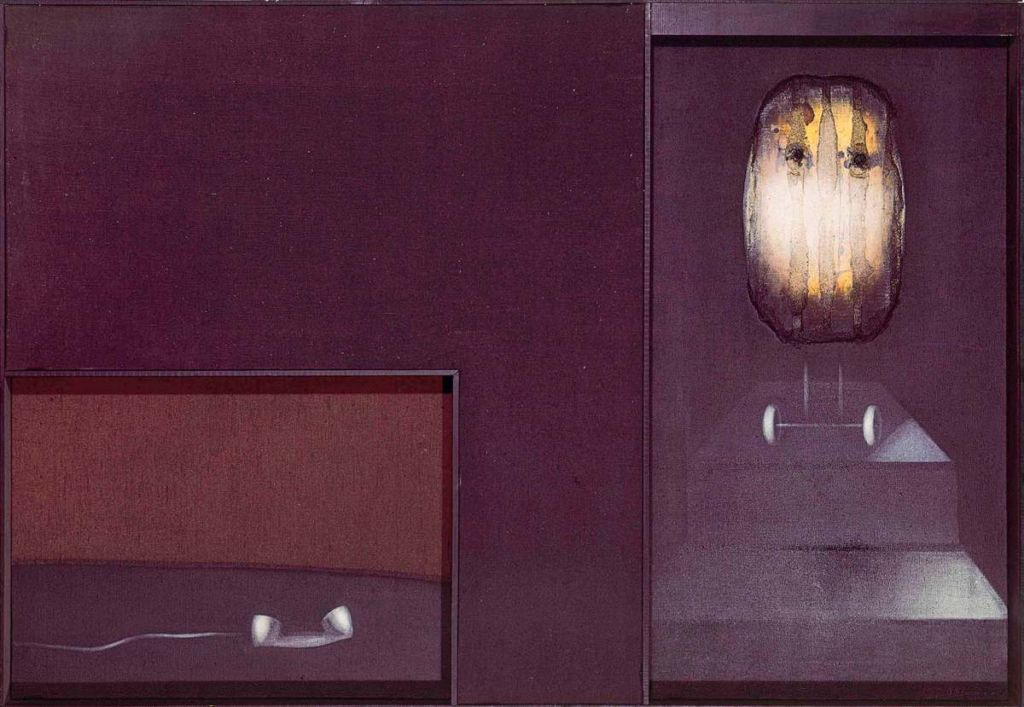In 2017, English artist Damien Hirst and German artist Till Roeskens each built a heritage project based on the past and memory. But while the former created a blockbuster to the glory of his producer, in this case art collector François Pinault, the latter reconstructed a world, that of shepherds’ paths, far removed from the logic of the market.
Sa propre vente aux enchères de toutes ses œuvres, en 2008, qui était une forme de test du marché.
Luc Boltanski et Arnaud Esquerre, Enrichissement, une critique de la marchandise, Paris, Gallimard, 2017.
Id., p. 107.
Charles Baudelaire, « Le peintre de la vie moderne », in L’art romantique, vol. III, Paris, Calmann-Lévy, 1885, p. 68-69.
Boltanski et Esquerre, op. cit., p. 169.
Ibid.
Id., p. 312.
Id., p. 244
Damien Hirst’s double exhibition, Treasures from the Wreck of the Unbelievable, held in Venice from April to December 2017, was in every respect a textbook case, rich in lessons about our contemporary economy and its relationship to art. In light of the sheer volume of the exhibition, the artist seems to have taken the time to look for a blockbuster recipe, and he found a co-producer in the person of François Pinault, art collector and well-known owner of an economic empire. In Venice, his foundation, located on two sites, Punta della Dogana and Palazzo Grassi, offer almost 5,000 m² of exhibition space. The show was based above all on a simple, cleverly chosen narrative, previously introduced in the press release and written on the display panels:
Once upon a time there was a wealthy collector named Cif Amotan II, a freed slave from Antioch who lived from the middle of the 1st century to the beginning of the 2nd century of the Common Era (…). It is said that once freed, Amotan began collecting sculptures, jewellery, coins and goods from all over the world. Historians claim that this incredible treasure was loaded onto the Apistos (the Unbelievable), a ship of unprecedented dimensions that sailed to Asit Mayor where Amotan had a temple built, dedicated to the Sun. For mysterious reasons (…), the ship sank, carrying its invaluable cargo with it. (…) In 2008, off the east coast of Africa, this legendary treasure, which remained buried at the bottom of the Indian Ocean for nearly two thousand years, was discovered and extracted from the depths of the sea…
Fiction featuring marine archaeology is a powerful stimulant of the imagination, regularly invoked by Hollywood. Here, entertainment is skillfully combined with scientific documentary through pseudo-accurate dates. The fiction allows for boldness. The Dogana exhibition opens with a gigantic Aztec sun stone, suggesting that the discoveries will modify our knowledge of antiquity, or verify stories that we thought were fanciful: objects evoking America, India or China “attest” to pre-Christian globalization. Archaeological fiction also allows for different formats of presentation: films, photographs (giant and luminous), sculptures, display cases… It makes it possible to exhibit works encrusted in artificial coral, adding colourful parasitism and tactile materials to antique craftsmanship originally designed to be smooth. The “invented” works all refer to a mythological episode “clarified” by a museum label. Several sculptures are of colossal dimensions – the Demon with Bowl in the hall of Palazzo Grassi rises to 18 metres. Others are of more human dimensions, representing groups (e. g. minotaur raping a woman), standing figures, torsos and busts. This statuary is made up of prototypes – recently “exhumed” and covered with corals that deform the anatomy – and they are presented in three or four versions. The “Skull of a Cyclops“, for example, which clearly reproduces a mammoth skull with a central eye socket, is replicated in three copies, two in white marble and one in bronze. At Palazzo Grassi, the focus is on miniature versions, with or without scoria, in gold or silver, with precious or semi-precious stones. The ensemble therefore presents both unique pieces and variations that “demonstrate” in passing that reproduction in art has a long history, especially with regard to “masterpieces”. Finally, a rather impressive quantity of display cabinets (twenty-one in all) line most of the spaces along the walls. They show, in order of size, hundreds of statuettes, amulets, pieces of pottery, coins, oddly shaped gold fragments, and various objects supposed to have been eroded by the sea. At Palazzo Grassi, the fiction is completed by an exhibition room with pseudo drawings from the Renaissance to the 18th century, allegedly inspired by ancient texts praising the works of the Unbelievable or the transmission of the models, testifying to the reputation of the fabulous collection even before the shipwreck.
Viewers are invited to become accomplices to the fiction, while not being fooled by it, which is flattering to them. The artist is reported to have intentionally reproduced the “corals” to distort the faces and bodies: the viewer is therefore clearly in the presence of contemporary figuration that has long since “exceeded” the notion of classic beauty. The complicity is reinforced by touches of humour: the label texts are written in the second degree, we smile at the Mickey Mouse incrusted in coral, the Star Wars type by-product in gold and gemstones. The viewers play at testing their knowledge of art history: here an allusion to Nefertititi, there a common myth (Medusa), the foot of the statue of Constantine, or a famous bronze from Benin… all the masterpieces whose reproduction forms the basis of the great classical works of art history. While preserving their elitist form, the grandiose nature of the outdoor statues, visible from the Grand Canal, is a powerful pull to Venice’s mass tourism.
Amotan II: metaphor of the collector
But the real “hero” of the story is actually the collector: he is the model. The accumulation of objects in his collection is truly stunning. Their quality is indexed to the stereotypes of international art. The works are modified by “corals” whose almost programmed extinction increases their rarity value, highlighting their diversity as an additional asset. The display cases, with items classified from the smallest to the largest, add the pleasure of the “cabinet of curiosities” to a collection dedicated to masterpieces. Together, the two exhibitions target all the collector categories: the contemporary, the “classical” modern enthralled by the refined “Greek” torsos, the amateur of old drawings spellbound by the skillful sanguine pastiches in the style of Leonardo da Vinci or Rubens, the snob who prefers an old gold Walt Disney covered with coral, the collector of arms, ceramics, old coins… The international corporation will appreciate the statuary groups with their scenes dominating the viewer, the aggressiveness of the actions portrayed, the ferocity of the animals and monsters, the legitimacy conferred by the reference to mythological stories. The obsessive will dream of display cases to fill… The suspicious will be reassured by the preciousness of the materials guaranteeing stable values. In short, Amotan is the collector of prestige and the obsessive, the magnificent, the hoarder and his Unbelievable is truly incredible in terms of the range of commercial goods.
The precision with which Hirst has developed his strategy comes from his perspective view of the art market, which few artists can boast of1. This strategy seems to clearly illustrate the study published in 2017 by Luc Boltanski and Arnaud Esquerre in Enrichissement, une critique de la la marchandise2, a study that is probably concomitant with the years of exhibition preparation. In this book, the authors identify “an economic change that is taking place, particularly in Western European countries”:
“Without putting forward the arguments that are often repeated today about the prestige that art confers on wealth, we will underline a change characterized by the development of what we have called the economy of enrichment, centred on the exploitation of a source of wealth creation that had not been used previously, at least not to this extent… to feed capitalist accumulation (…) This resource is the past. The economy of enrichment is not primarily based on the production of new objects, but above all on the enhancement of objects that already exist, extracted from the deposits of past things, often forgotten or reduced to waste, as well as on the manufacture of things indexed to the past…3 »
While previous phases of the industrial and consumer capitalist society were based on the value of the new and the fashionable, arousing an endless desire for the renewal of goods, Boltanski and Esquerre’s observation call on the other “half of art” that Baudelaire described in his “Le Peintre de la vie moderne4 ”. Baudelaire conceives modernity as “the transient, the fugitive, the contingent” (fashion), but at the same time seeks to “draw the eternal from the transient” by extracting the “poetics from history “, a substrate worthy of becoming “antiquity”. It seems that the latest phase of capitalism, in bringing the past, “history”, into fashion, now seeks not so much poetry as “the eternal and immutable”, the “historical background” that will legitimize its power (and perhaps its presence).

Exhibition view Treasures from the Wreck of the Unbelievable, Damien Hirst. Venice Biennale, April – December 2017. © RR
For Boltanski and Esquerre “the structure of the narrative makes it possible to represent the past and to insert within the same story the evocation of the past and the reference to a present that recalls it5 “. Hirst’s archaeological fiction follows precisely this pattern. The artist benefits from the fashion which he has helped to create, making a contemporary art considered to be elitist the basis for a system of cultural spectacle. The “force of memory” of which Boltanski and Esquerre speak and which underpins the new enrichment strategies is enhanced here by the prestige of the exhibition spaces which serve as showcases, placing the event in a setting itself imbued with the narrative power of memory: Venice and its palaces, its history, the very character of Pinault and his high-profile purchases which act as a guarantee. When giving a name to his collector model, Hirst did not forget that narrative presentation is “about attaching the names of people, singular or collective, [most often deceased] to things6 ”. Here the name of the wealthy freed slave Amotan mirrors the name of Pinault. The artist stages a past of world historical heritage in the current context of globalization, because “it is alliance through a narrative of present and past that gives access to ‘‘immortality’’7, which is ultimately the collector’s goal. The collector is sensitive to history accompanied by “mythical” stories which he or she feels part of through the material acquisition of a piece of the narrative. And, given that exhibiting a collection of objects and sculptures refers to the past, its aim or effect is to legitimize, through history, the fact that art belongs to the category of luxury objects. It demonstrates the logical continuity between a recognized work and precious objects that can be accumulated and collected. With regard to collecting, Boltanski and Esquerre explain as sociologists and historians that it “hinges on the ambiguous relationship” (sometimes as the height of uselessness, sometimes as a metaphor for capitalism) sustained in its development since the 19th century “with the formation of a cosmos of goods8 ”. As an accompaniment to economic globalization, the collection is an expanding phenomenon. However, when viewing Treasures from the Wreck of the Unbelievable, both the collector and the visitor who will never buy the art are transported into an imaginary world, removed from the confrontations of everyday life, by their amazement at wealth. The power of art in its critical dimension, to provoke reflection through emotion and invent a constructive imaginary of reality have been clearly evacuated here.
History without spectacle
In contrast to this amazement at wealth, we can cite the work developed in the same year 2017 by the German-born artist Till Roeskens at the CAIRN Art Centre, Digne-les-Bains, located in the “UNESCO Geopark of Haute-Provence” in southern France. Influenced to the specific nature of the place, located on the edge of the Alps, guest artists produce work in relation to the landscape. Till Roeskens is an artist who values political integrity, he makes few concessions to the market or to mediation. But living from one’s art, or simply being able to make it, requires a minimum remuneration, which in this case involves the system of residencies and assistance from State and cultural institutions. Till Roeskens has a certain notoriety. He was granted a residency in 2013-2014 at the prestigious Villa Medici in Rome allowing him to write a book recounting his life in text and photographs. He likes to use stories – he has storytelling skills – which he accompanies with photographs or drawings. From the CAIRN, his plan was to hike in the mountains around the city of Digne and meet the inhabitants. His work focuses on two projects, based on moments of listening and talking to two shepherds, Marcel Segond and Charles Garcin, who recount their memories of a bygone era when, in the season, they would take their herds of sheep up to the high meadows every day. Marcel Segond was 91 years old when Till Roeskens collected his memories. The artist decided to transcribe the episodes onto plaques that he himself installed at different points along the former sheep trail. The plaques offer opportunities to stop and read and to take in the landscape during the ascent. The artist used this path to create a hiking trail, called the Chemin Marcel (the Marcel Trail, lasting about an hour; overall climb of 240 m). To carry out his project, he and the team at the art centre took the official steps to make the trail legal (with the agreement of the various land owners) so that it could be open and signposted for hikers.

Till Roeskens, Sentier Marcel, 2017. In situ creation at Blégiers, Géoparc de Haute Provence, France, 2015-17. © CAIRN centre d’art
The second project, based on his conversations with the other shepherd, is called drailles, the word for the sheep trails leading up to the mountain pastures. Displayed in the main room of the small art centre, the exhibition begins with what shepherd Charles recalls to memory: his mapping of the surrounding mountain landscape, with all the place names. The names of valleys, slopes, streams, hills and groves are often poetic, full of imagery and history, and for the most part forgotten now that they are no longer used. The exhibition contains texts written as trails, weaving their way along two walls, like the walk through the mountains, reporting minor events and encounters. On the other two walls several photographs have been added, along with light, fragile, hand-drawn maps, with the carefully annotated names of each path, wherever the herds passed, with traces of a house, a refuge, or a spring.
Neo-economy
Both projects are thus presented as works of listening on the part of the artist, as though capturing a precious heritage but without the materiality, other than the actual landscape. The works are careful to reflect a sharing, an attentiveness to the words of the other. The creative process is horizontal in the exchange between the artist and the shepherds, echoed in the works themselves – the different levels of the hiking trail materialize a path that is trodden, not a path for discovering “spectacles”, however natural. In the exhibition space, no work imperiously stands over the viewer: all the information sheets and maps, which are intended to be read, are at eye level. The whole presentation tends to emphasize the quality of the encounter, i.e. not to affirm the artist’s share of creation, but to favour his status as a “gatherer”.
It is nonetheless remarkable that the works produced by Roeskens use both of Hirst’s notions, narrative and the past. But Roeskens’ stories are in no way “unbelievable”, they are not imaginary: they open up the landscape to the imagination of the past. This past is shaped by the experience of hiking in the present, it resonates through the names evoked, it is not aimed at creating material enrichment, but sketches the portrait of another life, one that is slow, rural, and profound. The Chemin Marcel trail is open, and free of charge, thanks to an agreement with the owners of the land: an exchange between people. There is nothing to buy, the plaques are the only materializations, and they would lose all meaning if they were privately owned. In the exhibition space, the texts written on the wall will be erased. The photographs and map drawings are not framed nor are they for sale. Nothing has a price on it apart from the book made at the Villa Medicis sold at the entrance. In the “cosmos” of Hirst and Pinault, every drawing has a price, whereas here, the works do not blur their status with luxury or prestigious goods. They do not represent the concept of the artist carried out by executors. They exhibit the sharing of the creation itself. The drawings can be purchased by a public service. But the price will hardly do more than compensate for a few hours of work. By contrast, today’s market leaves no source untapped: institutional purchasing confers a value that then allows galleries to solicit the artist. The gallery in return will be tempted to put pressure (logistical, financial) on the institutions – or on the artist – to further enhance the value of the works by promoting exhibitions. It is this very circle that Till Roeskens stands outside of, continuing his artistic approaches, that are difficult, impossible to accumulate or else worthless, using light, reproducible media, such as videos that he himself sells at a very low price. In a short presentation, the artist explains his interest in the story of the shepherds: because they restore time and space “outside the commercial world9”. Till Roeskens’ art is the practice of modesty, which is also a courageous political stance, relying as it does on the State’s maintenance of cultural policies in the service of all, a condition that is periodically undermined.
Since the 1980s, many artistic practices have explicitly called on the past. It is a movement that has developed with the growth of recording and archiving, an exponential accumulation of images accompanied by written or oral comments that make up the environment of our perception and reflection. The image and its narrative, validated by a recording that places them in the past, are thus the most shared modality in society today. This retrospection is expressed in many different forms, from the revival of traditional methods to remakes of conceptual works. The use of traditional processes may be reassuring for the faint-hearted, but discovering the past also opens up an almost infinite field of exploration for the curious, weary of the presentism imposed by the pace of today’s societies. The attractiveness of heritage, the nostalgia for a time fantasized as more stable and authentic, the narratives that build its “memory force” are a logical target of the economy, which is so adept at retrieving any signs that give an illusion of depth to material goods.
By focusing on the past and on narrative, the two examples analysed here point to where the recuperative force of the market is most powerful and effective in favour of the dominant economic system. But while one plays with the simulacra of spectacle, with a process of reconstruction that is also a real sell-out to the market, the other attempts to safeguard fragile memories whose disappearance would mean a real loss of heritage. But how many hikers will take the Chemin Marcel trail compared to the number of visitors at the Dogana?
Translation by Angela Kent
Thanks to Nadine Gomez et Giulia Pagnetti
Cover: Till Roeskens and Mathilde Spini, Pastorejant, 2017.




